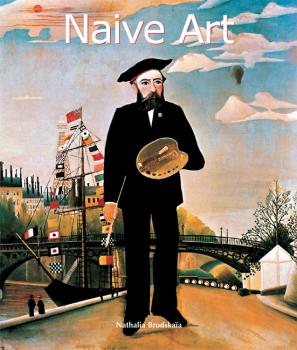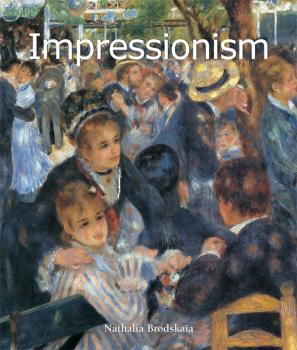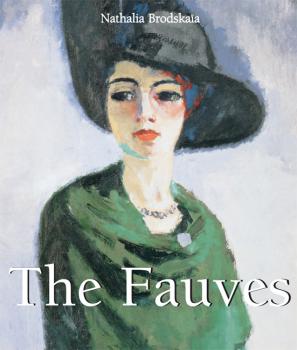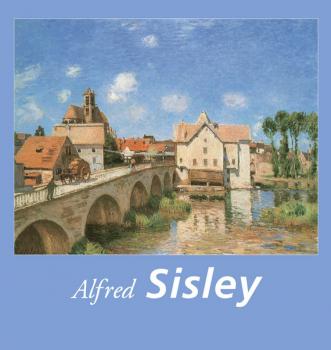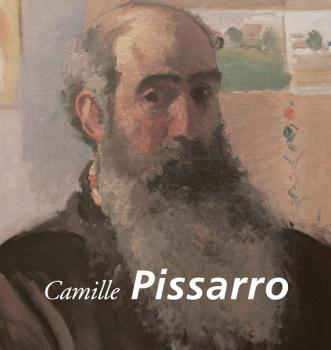Nathalia Brodskaya
Список книг автора Nathalia BrodskayaPaul Cézanne
Since his death 200 years ago, Cézanne has become the most famous painter of the nineteenth century. He was born in Aix-en-Provence in 1839 and the happiest period of his life was his early youth in Provence, in company with Emile Zolá, another Italian. Following Zolá’s example, Cézanne went to Paris in his twenty-first year. During the Franco-Prussian war he deserted the military, dividing his time between open-air painting and the studio. He said to Vollard, an art dealer, “I’m only a painter. Parisian wit gives me a pain. Painting nudes on the banks of the Arc [a river near Aix] is all I could ask for.” Encouraged by Renoir, one of the first to appreciate him, he exhibited with the impressionists in 1874 and in 1877. He was received with derision, which deeply hurt him. Cézanne’s ambition, in his own words, was “to make out of Impressionism something as solid and durable as the paintings of the museums.” His aim was to achieve the monumental in a modern language of glowing, vibrating tones. Cézanne wanted to retain the natural colour of an object and to harmonise it with the various influences of light and shade trying to destroy it; to work out a scale of tones expressing the mass and character of the form. Cézanne loved to paint fruit because it afforded him obedient models and he was a slow worker. He did not intend to simply copy an apple. He kept the dominant colour and the character of the fruit, but heightened the emotional appeal of the form by a scheme of rich and concordant tones. In his paintings of still-life he is a master. His fruit and vegetable compositions are truly dramatic; they have the weight, the nobility, the style of immortal forms. No other painter ever brought to a red apple a conviction so heated, sympathy so genuinely spiritual, or an observation so protracted. No other painter of equal ability ever reserved for still-life his strongest impulses. Cézanne restored to painting the pre-eminence of knowledge, the most essential quality to all creative effort. The death of his father in 1886 made him a rich man, but he made no change in his abstemious mode of living. Soon afterwards, Cézanne retired permanently to his estate in Provence. He was probably the loneliest of painters of his day. At times a curious melancholy attacked him, a black hopelessness. He grew more savage and exacting, destroying canvases, throwing them out of his studio into the trees, abandoning them in the fields, and giving them to his son to cut into puzzles, or to the people of Aix. At the beginning of the century, when Vollard arrived in Provence with intentions of buying on speculation all the Cézannes he could get hold of, the peasantry, hearing that a fool from Paris was actually handing out money for old linen, produced from barns a considerable number of still-lifes and landscapes. The old master of Aix was overcome with joy, but recognition came too late. In 1906 he died from a fever contracted while painting in a downpour of rain.
Edgar Degas
Degas was closest to Renoir in the impressionist’s circle, for both favoured the animated Parisian life of their day as a motif in their paintings. Degas did not attend Gleyre’s studio; most likely he first met the future impressionists at the Café Guerbois. He started his apprenticeship in 1853 at the studio of Louis-Ernest Barrias and, beginning in 1854, studied under Louis Lamothe, who revered Ingres above all others, and transmitted his adoration for this master to Edgar Degas. Starting in 1854 Degas travelled frequently to Italy: first to Naples, where he made the acquaintance of his numerous cousins, and then to Rome and Florence, where he copied tirelessly from the Old Masters. His drawings and sketches already revealed very clear preferences: Raphael, Leonardo da Vinci, Michelangelo, and Mantegna, but also Benozzo Gozzoli, Ghirlandaio, Titian, Fra Angelico, Uccello, and Botticelli. During the 1860s and 1870s he became a painter of racecourses, horses and jockeys. His fabulous painter’s memory retained the particularities of movement of horses wherever he saw them. After his first rather complex compositions depicting racecourses, Degas learned the art of translating the nobility and elegance of horses, their nervous movements, and the formal beauty of their musculature. Around the middle of the 1860s Degas made yet another discovery. In 1866 he painted his first composition with ballet as a subject, Mademoiselle Fiocre dans le ballet de la Source (Mademoiselle Fiocre in the Ballet ‘The Spring’) (New York, Brooklyn Museum). Degas had always been a devotee of the theatre, but from now on it would become more and more the focus of his art. Degas’ first painting devoted solely to the ballet was Le Foyer de la danse à l’Opéra de la rue Le Peletier (The Dancing Anteroom at the Opera on Rue Le Peletier) (Paris, Musée d’Orsay). In a carefully constructed composition, with groups of figures balancing one another to the left and the right, each ballet dancer is involved in her own activity, each one is moving in a separate manner from the others. Extended observation and an immense number of sketches were essential to executing such a task. This is why Degas moved from the theatre on to the rehearsal halls, where the dancers practised and took their lessons. This was how Degas arrived at the second sphere of that immediate, everyday life that was to interest him. The ballet would remain his passion until the end of his days.
Symbolism
Symbolism appeared in France and Europe between the 1880s and the beginning of the 20th century. The Symbolists, fascinated with ancient mythology, attempted to escape the reign of rational thought imposed by science. They wished to transcend the world of the visible and the rational in order to attain the world of pure thought, constantly flirting with the limits of the unconscious. The French Gustave Moreau, Odilon Redon, the Belgians Fernand Khnopff and Félicien Rops, the English Edward Burne-Jones and Dante Gabriel Rossetti, and the Dutch Jan Toorop are the most representative artists of the movement.
Post-Impressionism
Whilst Impressionism marked the first steps toward modern painting by revolutionising an artistic medium stifled by academic conventions, Post-Impressionism, even more revolutionary, completely liberated colour and opened it to new, unknown horizons. Anchored in his epoch, relying on the new chromatic studies of Michel Eugène Chevreul, Georges Seurat transcribed the chemist’s theory of colours into tiny points that created an entire image. With his heavy strokes, Van Gogh illustrated the midday sun, whilst Cézanne renounced perspective. Rich in its variety and in the singularity of its artists, Post-Impressionism was a passage taken by all the well-known figures of 20th century painting – it is here presented, for the great pleasure of the reader, by Nathalia Brodskaïa.
Naive Art
Naive art first became popular at the end of the 19th century. Until that time, this form of expression, created by untrained artists and characterised by spontaneity and simplicity, enjoyed little recognition from professional artists and art critics. Influenced by primitive arts, naive painting is distinguished by the fluidity of its lines, vivacity, and joyful colours, as well as by its rather clean-cut, simple shapes. Naive art counts among it artists: Henri Rousseau, Séraphine de Senlis, André Bauchant, and Camille Bombois. This movement has also found adherents abroad, including such prominent artists as Joan Miró, Guido Vedovato, Niko Pirosmani, and Ivan Generalic.
Impressionism
“I paint what I see and not what it pleases others to see.” What other words than these of Édouard Manet, seemingly so different from the sentiments of Monet or Renoir, could best define the Impressionist movement? Without a doubt, this singularity was explained when, shortly before his death, Claude Monet wrote: “I remain sorry to have been the cause of the name given to a group the majority of which did not have anything Impressionist.” In this work, Nathalia Brodskaïa examines the contradictions of this late 19th-century movement through the paradox of a group who, while forming a coherent ensemble, favoured the affirmation of artistic individuals. Between academic art and the birth of modern, non-figurative painting, the road to recognition was long. Analysing the founding elements of the movement, the author follows, through the works of each of the artists, how the demand for individuality gave rise to modern painting.
The Fauves
Born at the dawn of the 20th century, Fauvism burst onto the artistic scene at the 1905 Salon d'Automne with great controversy by throwing bright, vibrant colours in the face of artistic convention. Fuelled by change, artists like Matisse, Derain, and Vlaminck searched for a new chromatic language by using colour out of its habitual context. Freed from the strict technique advocated by the École des Beaux-Arts, they used blocky colours as their main resource, saturating their stunning paintings. The author invites us to experience this vivid artistic evolution that, although encompassing a short amount of time, left its mark on the path to modernity.
Sisley
A painter of the Impressionist movement, Alfred Sisley was born on October 30th 1839 in Paris but was of British origin. He died on January 29th 1899 in Moret-sur-Loing. Growing up in a musical family, he chose to pursue painting rather than the field of business. In 1862 he enrolled in Gleyre’s studio where he encountered Renoir, Monet, and Bazille. The four friends left their master’s studio in March 1863 to work outdoors, setting their easels to paint the forest scenes of Fontainebleau. Sisley tirelessly chose the sky and water as subjects for his paintings, animated as they were by the changing reflections of light, for his landscapes of the regions surrounding Paris, Louveciennes, and Marly-le-Roi. This was in keeping with the painting styles of Constable, Bonington, and Turnet. Even if he had been influenced by Monet’s work at some point, Sisley drew away from his friend’s style due to his own desire for his work to follow the structure of forms. Sensitive to the changing seasons, he liked to portray spring with its blooming orchards, but it was the wintry and snowy countryside which Sisley was particularly attracted to. His reserved temperament preferred mystery and silence to the splendour of Renoir’s sunny landscapes.
Pissarro
“Father Pissarro”, as his friends liked to call him, was the most restrained of the artists of the Impressionist movement. Perhaps it was his age, being older than his fellow artists Monet, Sisley, Bazille, and Renoir, or rather his maturity, which resulted in his works having such serene and sober subjects and compositions. A man of simple tastes, he enjoyed painting peasants going about their daily lives. However, Pissarro owes his belated fame to his urban landscapes, which he treated with the same passion he used to paint beautiful stormy skies and frost-whitened mornings.
Toulouse-Lautrec
Lautrec studied with two of the most admired academic painters of the day, Léon Bonnat and Fernand Cormon. Lautrec’s time in the studios of Bonnat and Cormon had the advantage of introducing him to the nude as a subject. At that time life-drawing of the nude was the basis of all academic art training in nineteenth-century Paris. While still a student, Lautrec began to explore Parisian nightlife, which was to provide him with his greatest inspiration, and eventually undermined his health. Lautrec was an artist able to stamp his vision of the age in which he lived upon the imagination of future generations. Just as we see the English court of Charles I through the eyes of van Dyck and the Paris of Louis-Philippe through the eyes of Daumier, so we see the Paris of the 1890s and its most colourful personalities, through the eyes of Lautrec. The first great personality of Parisian nightlife whom Lautrec encountered – and a man who was to play an important role in helping Lautrec develop his artistic vision – was the cabaret singer Aristide Bruant. Bruant stood out as an heroic figure in what was the golden age of Parisian cabaret. Among the many other performers inspiring Lautrec in the 1890s were the dancers La Goulue and Valentin-le-Desossé (who both appear in the famous Moulin Rouge poster), and Jane Avril and Loïe Fuller, the singers Yvette Guilbert, May Belfort and Marcelle Lender, and the actress Réjane. Lautrec was, along with Degas, one of the great poets of the brothel. Degas explored the theme in the late 1870s in a series of monotype prints that are among his most remarkable and personal works. He depicts the somewhat ungainly posturing of the prostitutes and their clients with human warmth and a satirical humour that brings these prints closer to the art of Lautrec than anything else by Degas. However, the truthfulness with which Lautrec portrayed those aspects of life that most of his more respectable contemporaries preferred to sweep under the carpet naturally caused offence. The German critic Gensel probably spoke for many when he wrote: “There can of course be no talk of admiration for someone who is the master of the representation of all that is base and perverse. The only explanation as to how such filth – there can be no milder term for it – as Elles can be publicly exhibited without an outcry of indignations being heard is that one half of the general public does not understand the meaning of this cycle at all, and the other is ashamed of admitting that it does understand it.”




